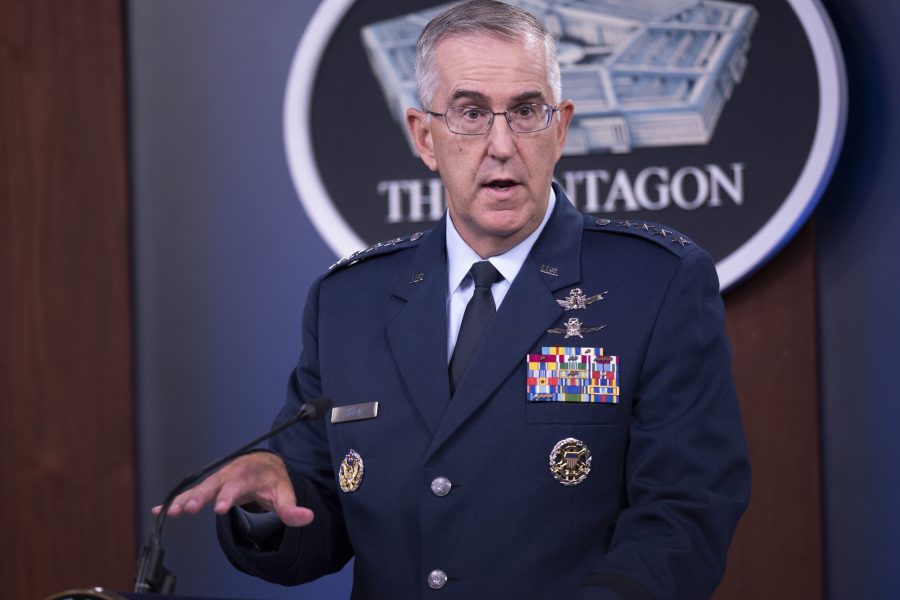The coronavirus pandemic has delayed release of the Pentagon’s new joint combat guidelines until the spring, complicating efforts to put the armed forces on the same path to better communication and speed up decision-making, the military’s No. 2 officer said Jan. 22.
Gen. John E. Hyten, vice chairman of the Joint Chiefs of Staff, said during an event hosted by the National Security Space Association that even after a year of development, the joint warfighting concept hasn’t reached “the first level of maturity” needed to publish an initial plan.
“We really need to play some large wargames with all the services playing, including the Space Force, and a very active ‘red team’ that plays real-time and looks at the different concepts and figures out what works and doesn’t work,” he said.
The military had wanted to hold three major wargames and a global exercise by now, but restrictions in place to curb the virus’s spread got in the way. Only one event has happened so far, Hyten said, and was “less than satisfactory” because of those limitations.
Defense Department officials knew by November that it wasn’t possible to hit their December deadline to release the new concept, and decided to take more time to hold exercises and wargames.
“The other thing we’re going to publish in the spring is [a] requirements document for the four supporting concepts coming out of it,” Hyten said. Those requirements, for aspects like software standards, will guide the military in building out joint all-domain command-and-control.
“You had to have somebody that says, ‘What do we actually have to do that will enable a joint force rapidly to build this information advantage across everything that we do?’” he added.
Breaking Defense previously reported that the four pillars of the new plan are:
- Joint fires, handled by the Navy
- Command and control, handled by the Air Force
- Logistics, handled by the Army
- Information advantage, handled by the Joint Staff. The Army’s Project Convergence and Department of the Air Force’s Advanced Battle Management System are pursuing similar ideas as well.
The requirements blueprint due out in the spring will guide the military’s way forward on issues like space, electromagnetic warfare, and other digital-centric operations.
“Space is critical in everything that we do,” he said. We have to figure out how to actually define joint requirements, which we’ve never really done effectively. We always validate service requirements, but we have to define the joint requirements of the future, and then hold the services—and the Space Force being one of those services—accountable for meeting those capabilities as we go forward.”
The concept will dovetail with cyber offense and defense planning also underway—a key piece of future combat that will heavily rely on software and networked weapons and vehicles.
“[Deputy Defense Secretary David L. Norquist] set up a structure where we came together and we came up with, in the classified world, four pilots, where [U.S.] Cyber Command, the acquisition community, and the Joint Staff are working together to figure out how best to defend the entire enterprise, start to finish,” he said.
That’s led to great progress, but not without its problems.
“We’ve done stuff that just didn’t flat-out work,” Hyten said. “We’ve done stuff that [was] actually, in retrospect, kind of stupid. … “We’re all in on trying to figure out the right roles and responsibilities on how to do this and establish this as policy across the board.”
